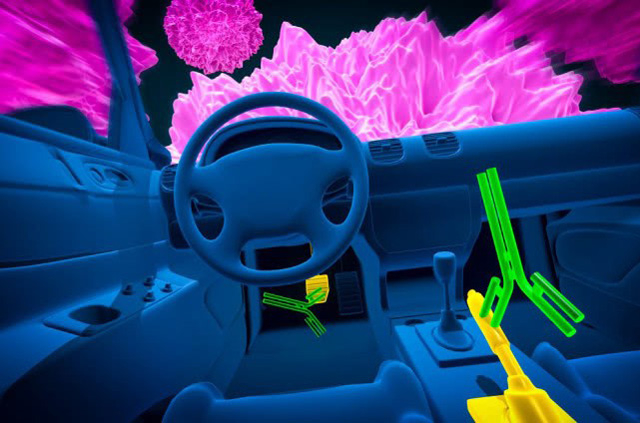Cancer kills millions of people every year and is one of humanity’s greatest health challenges. By stimulating the inherent ability of our immune system to attack tumor cells this year’s Nobel Laureates have established an entirely new principle for cancer therapy. The 2018 Nobel Prize in Physiology or Medicine jointly to James P. Allison and Tasuku Honjo. Both scientists showed how different strategies for inhibiting the brakes on the immune system can be used in the treatment of cancer. The seminal discoveries by the two Laureates constitute a landmark in our fight against cancer.
James P. Allison studied a known protein that functions as a brake on the immune system. He realized the potential of releasing the brake and thereby unleashing our immune cells to attack tumors. He then developed this concept into a brand new approach for treating patients.
In parallel, Tasuku Honjo discovered a protein on immune cells and, after careful exploration of its function, eventually revealed that it also operates as a brake, but with a different mechanism of action. Therapies based on his discovery proved to be strikingly effective in the fight against cancer.
What is immunotherapy?
Immunotherapy is a type of cancer treatment that helps your immune system fight cancer. The immune system helps your body fight infections and other diseases. It is made up of white blood cells and organs and tissues of the lymph system.
Today there are mainly three types of immonotherapy:
- nonspecific immune stimulation
- T-cell transfer therapy
- immune checkpoint inhibitors
The 2018 Nobel Prize in Physiology or Medicine is awarded to two scientists who have great contribution to discover checkpoint proteins:CTLA-4 [James Allison, 1996] and PD-1[Tasuku Honjo, 1992] and use them clinically.
CTLA-4 and PD-1 are proteins on the surface of cells that have a role in regulating the immune system’s response to the cells of the human body by down-regulating the immune system and promoting self-tolerance by suppressing T cell inflammatory activity, which prevents human body from autoimmune diseases. However, in the cancer disease state, the interaction of PD-L1 on the tumor cells with PD-1 on a T-cell reduces T-cell function signals to prevent the immune system from attacking the tumor cells. Checkpoint inhibitors, which are drugs that help the immune system respond more strongly to a tumor.
These drugs work by releasing “brakes” that keep T cells (a type of white blood cell and part of the immune system) from killing cancer cells. These drugs do not target the tumor directly.
Instead, they interfere with the ability of cancer cells to avoid immune system attack.Use of an inhibitor that blocks the interaction of PD-L1 with the PD-1 receptor can prevent the cancer from evading the immune system in this way. Several PD-1 and PD-L1 inhibitors are being trialled within the clinic for use in advanced melanoma, non-small cell lung cancer, renal cell carcinoma, bladder cancer and Hodgkin lymphoma, amongst other cancer types.

Figure 1: The purple-red obstacle is a tumor cell, and the driving blue car is an immune cell (mainly “effect T lymphocyte”). Originally, immune cells killed tumor cells (the car crashed into front of the obstacle); however, the car’s foot brakes and handbrakes (yellow) were activated and the car was stopped. The scientists found that CTLA-4 [James Allison, 1996] and PD-1 [Tasuku Honjo, 1992] antibodies (green) can lift the two brake systems, and the car can rush to the obstacle again which kills tumor cells.
